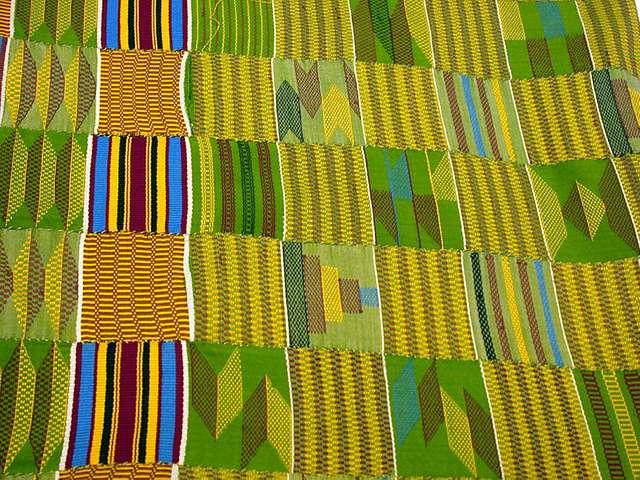Unveiling the Royal Weave: Exploring the allure and Importance of Kente Cloth
Table of Contents
Introduction
Adorned in vibrant hues and intricate patterns, Kente cloth embodies the rich cultural heritage and artistic prowess of the Ashanti and Ewe peoples of west Africa. For centuries, this regal fabric has served as a symbol of royalty, status, and exceptional craftsmanship. embark on a journey to unravel the allure and significance of Kente cloth, deciphering its meticulously woven threads and uncovering its historical and cultural depths.
Origin and History
The genesis of Kente cloth can be traced back to the 17th century in the Ashanti Kingdom (present-day Ghana). Legend has it that a skilled weaver named Kente saw a spider’s web glistening in the morning sun and was inspired to create a similar fabric using a horizontal loom.
Over time, Kente weaving techniques where perfected, and the fabric became an integral part of Ashanti and Ewe society. It was worn by kings, chiefs, and other notable figures to signify their authority and social standing. The complex designs and colors woven into Kente cloth communicated messages and told stories, making it a form of visual storytelling that transcended spoken language.
Production Process
Creating a single piece of kente cloth is a laborious and time-consuming process that can take several weeks. The finest Kente is made from hand-spun silk threads dyed with natural pigments extracted from plants,trees,and minerals.
Weavers work on horizontal looms, deftly interlacing brightly colored threads to form intricate patterns. The process requires precision,patience,and a deep understanding of the symbolic meanings associated with each color and design. The finished woven fabric is often fringed with intricate tassels or embroidered with decorative elements.
Weaving Techniques
Slitweave: Creating thin, decorative slits along the length of the cloth using a sharp knife.
Kpokpo: Interlacing threads in a way that creates raised, three-dimensional designs.
Adweneasa: Weaving complex, abstract patterns that resemble writing or symbols.
Etwe: Using multiple strands of thread to create thick, bold designs.
Cultural Significance
Kente cloth holds immense cultural and symbolic significance for the Ashanti and Ewe peoples.Each pattern and color combination conveys a specific message or meaning, ranging from proverbs and historical events to social status and family lineage.
Adinkra symbols: Woven into Kente cloth, these geometric designs represent proverbs, concepts, and aspirations.
Stool covers: Elaborate stool covers adorned with Kente cloth are reserved for kings and chiefs, symbolizing their authority.
Funeral attire: Kente cloth is worn during funerals to honour the deceased and celebrate their life.
Benefits of Kente Cloth
Durability and longevity: Properly cared for, Kente cloth can last for generations.
Breathable and comfortable: Made from natural fibers,Kente is lightweight and airy to wear.
Aesthetic appeal: The vibrant colors and intricate patterns of Kente make it a true work of art.
Cultural expression: Wearing Kente cloth is a way to connect with one’s cultural roots and honor traditions.
Supports customary artisans: buying Kente cloth supports local weavers and preserves a valuable cultural heritage.
Practical Tips for Using Kente Cloth
Choose quality: Look for Kente cloth made from high-quality materials that are well-woven and durable.
Care with respect: Hand-wash or dry-clean Kente cloth to preserve its colors and fibers.
Wear with confidence: Kente cloth exudes elegance and cultural pride. Embrace it as a statement piece.
Accessorize sparingly: Let the vibrant patterns of Kente cloth take center stage and complement it with minimal accessories.
* Store carefully: Store Kente cloth in a cool,dry place away from direct sunlight to prevent fading.
Conclusion
Kente cloth is more than just a fabric; it is a living testament to the creativity, artistry, and cultural wealth of the Ashanti and Ewe peoples. Its intricate patterns and vibrant hues hold deep symbolic meanings and evoke a sense of pride and belonging. Whether worn as a traditional garment or used in contemporary fashion, Kente cloth continues to captivate the world with its timeless allure and enduring significance. By preserving and celebrating this ancient craft, we honor the legacy of our ancestors and ensure that the spirit of Kente cloth continues to inspire generations to come.

